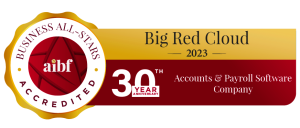Not every business owner has dreams about becoming a global organisation with thousands of store locations. You may be happy to keep your business small and easily manageable. Yet operational tasks can soon get complex to where extra help is required. It is at this time that small business owners are surprised at the costs associated at hiring employees.
Advertising for the open position, performing background checks, holding interviews, paying national insurance contributions and taking on non-wage costs just to hire one new employee can be astronomical. The UK Federation of Small Business (FSB) and the Centre for Economics and Business Research (CEBR) conducted a report to determine the true employment costs that a small business has to take on.
Using 2013 datasets from the Annual Survey of Hours and Earnings from the Office of National Statistics, data showed that small businesses have costs ranging about £37,000 / €52,000 to pay for wages and national insurance contributions when taking on that first employee. Factoring in your salary as the business owner, and your total costs are about £71,000 / €99,000.
An interesting fact to take note is that the smaller the business is, the higher the employment costs will be. Administration and regulatory requirements will be the top expenses you take on. Also keep in mind that the more employees you hire, the lower the costs to your business.
Addressing hiring expenses before looking for new workers has to be a priority. Before posting the job position, try the following advice so the financial hit isn’t so hard on your profits.
- Look toward streamlining current processes and administrative tasks. The more places where you can cut costs will allow you to have the extra resources for hiring a new employee. Going paperless with cloud-based file management and accounting software may be ideal for your small business.
- Go over the bookkeeping numbers with your accountant to see how much you can allocate to the hiring process. Carefully evaluate the costs for advertisements, background checks, interviews and employee training. Also figure out the intangible costs related to the administrative tasks of reviewing resumes and answering phone calls about the job posting.
- Decide on the most cost-effective places to advertise the open position. Mobile technologies and social media recruiting is on the rise for businesses because of the lower costs. Selecting a range of advertisement placement strategies will allow you to find the right worker in a faster time.
- Never settle to just hiring the first worker you come across. Hiring and training an employee who is the wrong fit in your company will just lead to more costs in the long run.
As a small business owner, you need to keep track of hiring costs so you aren’t overspending on the process. Research the hiring platforms where your specific workers visit and engage in the right advertising strategies to attract the ideal employees.
Besides the costs of hiring employees don’t forget your legal obligations as an employer. Our HR guide will outline exactly what your responsibilities are and provide a handy checklist so that you can keep on top of them.





